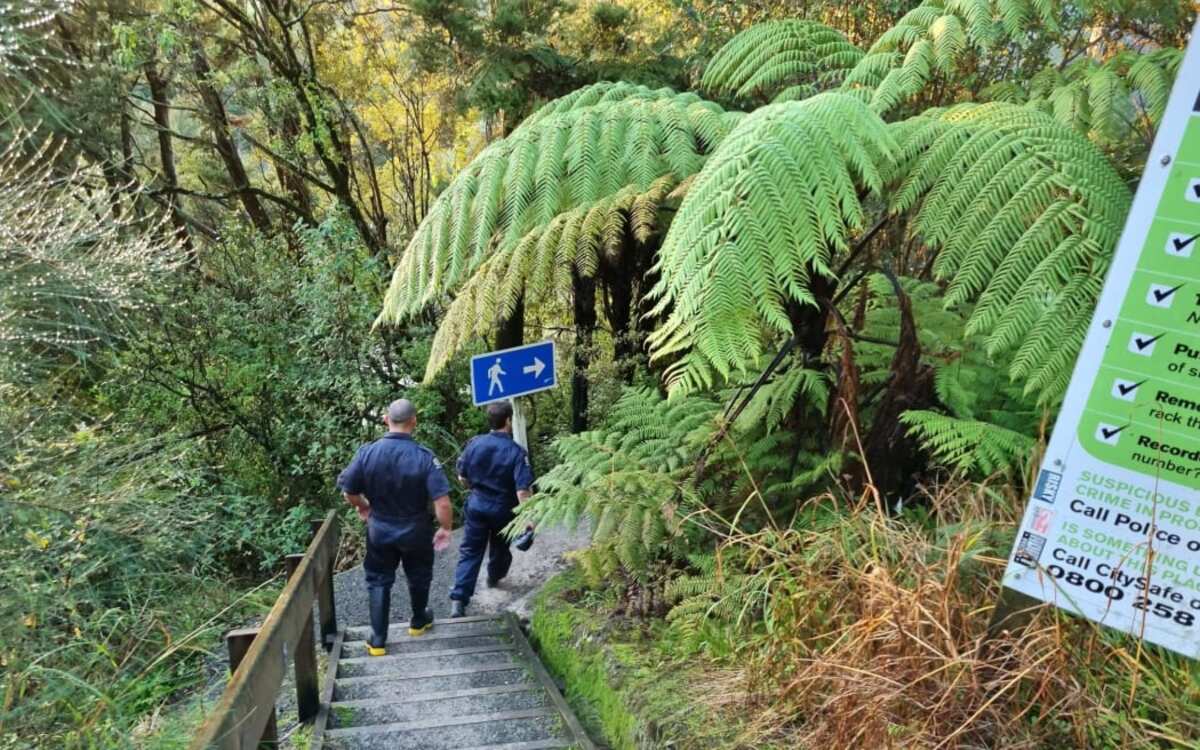An hour of terror - What happened during the Abbey Caves tragedy
RNZ
19 October 2024, 7:52 PM
 Police descend the steps to Abbey Caves during the search for the missing student. Photo: RNZ / Tom Taylor
Police descend the steps to Abbey Caves during the search for the missing student. Photo: RNZ / Tom Taylor- The summary of facts from WorkSafe reveals what happened in the cave
- The water quickly rose, trapping students
- Karnin Petera, 15, died in the incident
- Several trapped people acted heroically to help save the others, the report shows
The full terror of what happened in Whangārei's Abbey Caves - and the acts of heroism that almost certainly saved students' lives - has been revealed for the first time since the tragedy.
On 9 May 2023, 17 outdoor education students from Whangarei Boys' High School and two adults entered the cave complex on what was supposed to be an enjoyable day out.
A torrential downpour while they were in the cave, on top of unseasonably heavy rain in preceding weeks, caused water levels to rise rapidly and led to the death of 15-year-old Karnin Petera, known to friends and family as Tino.
The school was last month ordered to pay more than $500,000 in reparations to Karnin's family and the other victims, after earlier pleading guilty to charges laid by WorkSafe.
The summary of facts from WorkSafe's prosecution has only now been released, detailing the decision-making ahead of the trip - and what happened inside the cave that fateful morning.
The summary stated the trip leaders had taken a successful trip through all three caves a day earlier.
Expecting rain later in the day, around 3pm, they started earlier and decided to shorten the trip to Organ Cave only, which they had not previously known to flood.
The summary said water inside the cave was at its normal knee to waist height when they entered around 9.30am.
At a junction about 150m into the cave, they took the upper, dry passage, which led to a glow-worm chamber.

A newly released summary of facts has for the first time revealed the terror - and heroism - of last year's Abbey Caves tragedy. Photo: RNZ / Tom Taylor
The boys spent some time there before returning to the junction about 20 minutes later.
In the meantime, however, the water had risen markedly.
The trip leader decided it was safer to try to walk out of the cave than wait out the flood in the upper passage, because it was not known how long the water would take to subside, and he had no way of communicating with the outside.
The students got into the water but it was deeper and swifter than anticipated, and an emergency quickly developed.
With the water mostly above their heads, the group floated down the cave to an area of exposed rock.
By then it was impossible to get back to the upper passage.
There they were instructed to link arms and get back into the flow. Many were dragged down by their gumboots or overalls or by other students.
They were unable to stay linked up for long.

Karnin Petera died in the incident. Photo: SUPPLIED
When they eventually reached the entrance they saw a large volume of water rushing around either side of a large rock.
One of the adults recognised it as a "sieve", where the power of the water passing through a narrow gap created a powerful force that could suck people below the surface.
Students who reached the left-hand side of the rock managed to get out relatively easily; those who were sucked to the right had a lot more difficulty.
"A number of students describe thinking they were going to drown and feeling panicked and scared. Some students describe having bruises and cuts from being slammed into rocks while being pulled by the force of the water," the summary stated.
One student who was on the right-hand-side of the rock recalled seeing Karnin's foot become trapped between rocks as he was being sucked down.
Many students said it was likely more boys would have drowned but for the efforts of one person who placed his body directly in front of the sieve.
Another person was seen fully submerged for long periods while he pushed students out of the water above his head.
Others helped boys out of the water.
Names have been redacted from the summary of facts so the heroes' identities are unknown.
The two boys first to exit the cave did not find a phone with the gear left at the entrance, so they ran to the nearest property for help. An arborist working there called 111 at 10.35am.
Karnin was located around 7pm when the water had subsided enough for a rescue team to enter the cave. His body was recovered about 9pm.
The summary goes on to examine in detail the weather conditions, both on the day and in preceding weeks, the planning and risk-assessment that went into the trip, and their shortcomings.
The school, which pleaded guilty at the earliest opportunity, said it had since implemented new outdoor education policies and procedures.
It had also commissioned a full review by Education Outdoors New Zealand, which had led to a new safety management plan for future trips.
This story was originally published by RNZ


